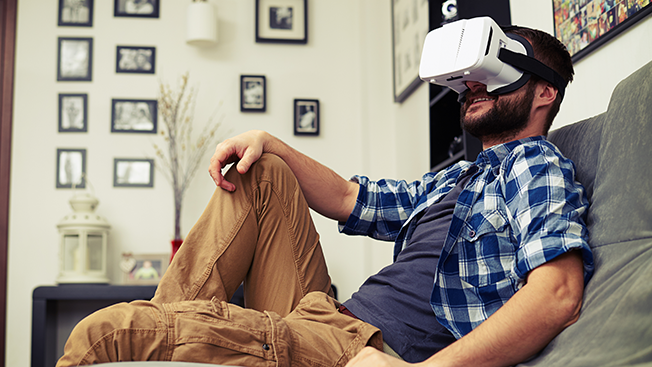Nielsen Says Mainstream Consumers Really Are Interested in Virtual Reality
Source: Marty Swant
 The question of whether virtual reality will become a mainstream medium has in some ways been more of a "chicken or egg" dilemma. Some say there needs to be enough content created to warrant paying for expensive VR headsets, while others say there needs to be enough headsets in the market to give advertisers and media companies a good reason to invest in the burgeoning medium.
The question of whether virtual reality will become a mainstream medium has in some ways been more of a "chicken or egg" dilemma. Some say there needs to be enough content created to warrant paying for expensive VR headsets, while others say there needs to be enough headsets in the market to give advertisers and media companies a good reason to invest in the burgeoning medium.
Still, the majority of the country hasn't yet had a chance to even try VR—whether that's with high-end systems like Oculus Rift or HTC Vive, or more financially feasible models like Samsung's Gear VR or Google Cardboard. But that hasn't stopped people from getting started.
Now, a Nielsen survey of 8,000 consumers found that many might actually be more ready for VR than some might have guessed. According to a report released today by Nielsen's Media Lab, nearly one-fourth (24 percent) said they will likely use or purchase VR in the next year. Another 20 percent said they don't plan to try it, but expressed increased interest after learning just a little about the basics.
"Advertisers will be pleased to find that (those interested in VR) are 'triple-A' consumers: Not only are they early adopters of new products and services, but they're advocates for the brands that they use and love," said Harry Brisson, Nielsen's director of lab research. "They also appreciate premium products and services, for which they are willing to pay a premium price."
For the study, Nielsen served respondents one of 100 different videos related to virtual reality—product reviews, news pieces about the industry or anecdotes from those who have created or consumed VR—and found that many respondents were interested in VR or already consider themselves "experts." In fact, many feel as knowledgeable about VR as they do about other trends like wearables and the internet of things. Video clips served to study participants came from a variety of sources including content from VR manufacturers, news networks and YouTube creators.
That should be good news for media companies and advertisers who've already begun investing in the space. (As Nielsen notes, 17 publisher presentations at this year's NewFronts included VR and 360-video as areas worth investment.) The research firm said those who plan to try VR outspend the average consumer in most purchasing categories, spending nearly twice as much on live event tickets, quick-serve restaurants and alcoholic beverages.
It also didn't take very long for respondents to become more curious, with some consumers increasing their familiarity or interest within the first two minutes. Nielsen said more than half of viewers showed at least some likelihood of buying VR after watching a video.
Those who actually tried VR for the first time showed even stronger results. In a separate study, Nielsen actually brought in 150 people to try out a VR headset, which resulted in 68 percent of respondents expressing more interest in buying or using VR after wearing a headset.
| }
|